That's The Spirit- Haystack Needle Champion '23
I will assume you've heard the Lindbergh story before, so I won't entreat you all to that tale again. Instead I will share exploits and anecdotes from this specific project, one of which is finding the proverbial 'needle in a haystack' not once but twice.
It is here, before all of you as my audience and witnesses, that I declare myself reigning Hide And Seek Champion of the World, in the Year Of Mankind's Dominion Two Thousand And Twenty Three. Two times during this project, absolutely minuscule pieces went zinging off out of my tweezers into what I had thought were places unknown, yet I managed to find them both times. I have no idea how I did it, as both times were also outside, but here we are.
I also managed to drop and step on my engine and cowling, but that turned out fine somehow as well.
As for the model, this is the Revell 1/48, finished to represent the Spirit as it looked on May 20/21. The aircraft changed in small ways throughout it's life, and the aircraft hanging from the ceiling of the Smithsonian has details it did not have that morning in May '27.
As I can make no project simple, these are all the changes I made for a May 1927 Spirit of St Louis:
- The wicker seat isn't quite "right." I can't believe I just said this. Small details were removed and added.
- Wiring added for fuel controls.
- Hollowed out ends of venturi tube and wind generator cups.
- Little wire added for venturi tube
- Control lines for tail feathers and ailerons
- Removed louvers on front cowling piece.
- Rescribed lines and details on spinner.
- Wires added to engine.
Again, the Spirit changed in details before Lindbergh handed it over to the museum. The spinner did not have engine turning, as it was replaced before the big flight. It did not have the flags (added later during the South America tour). The cowling did not have the louvers: these were (it looks to be) cut into the covers later on. The middle wing fuel vent was removed later on. Flare tubes on the bottom were also added later on. The Spirit in the museum also has a later tail skid and support strut for the wind generator.
You are probably wondering about the engine turning, or "perlée." I debated a long time on how I wanted to do this. They include decals in the kit, which aren't bad, but aren't perfect either. I considered using Bare Metal Foil and burnishing it with a Dremel. There's also a technique to paint it and then draw each mark with a Prismacolor pencil.
What I did might be a little less crazy. I sprayed the cowling pieces with Testors Buffing Metalizer, and then once it was dry, I went back over it with a small, pointed cotton swab and buffed out each individual circle. It took a long time with repeated passes. It also doesn't look perfect, as the circles don't overlap as they should, but life is short, I am lazy, and there are many more projects to tackle. I think it came out acceptable enough.
Thanks for looking.
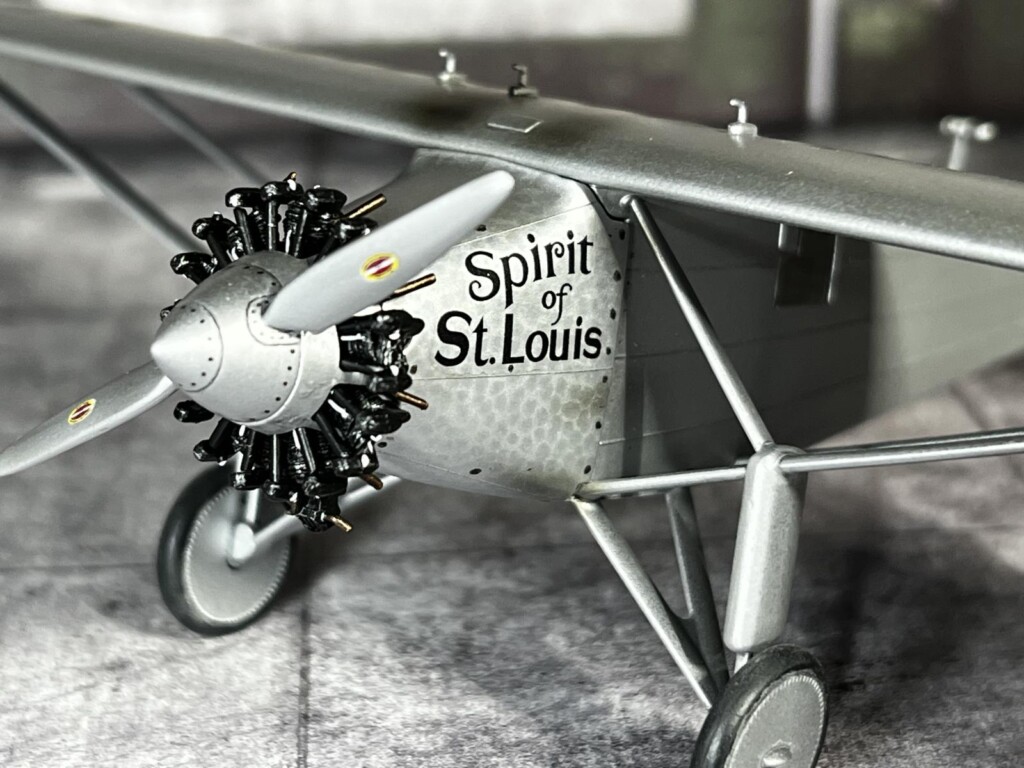
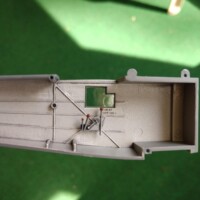
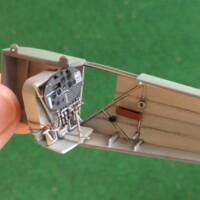
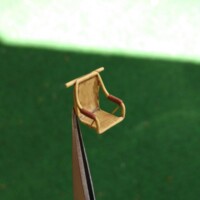
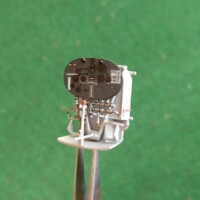
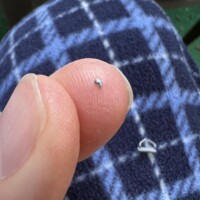
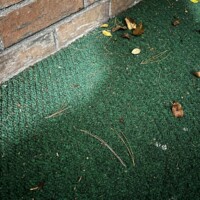
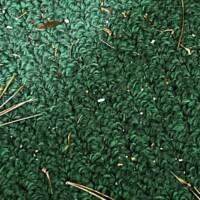
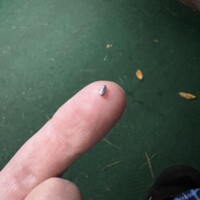
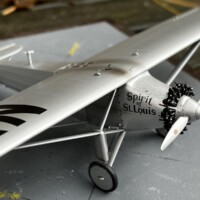
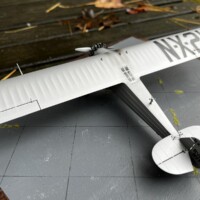
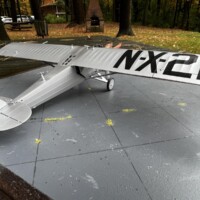
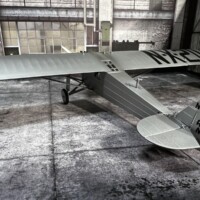
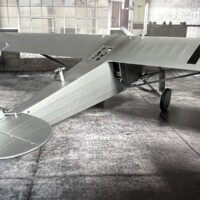
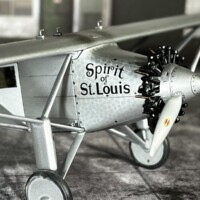
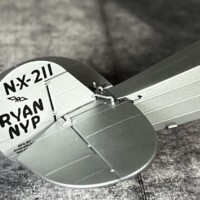

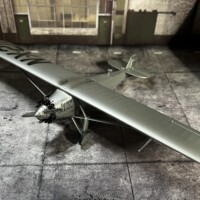
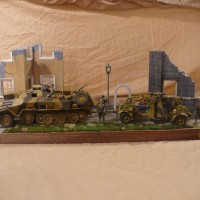
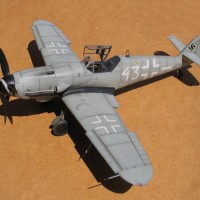
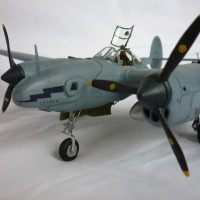
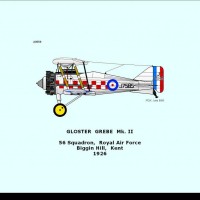
Awesomely awesome. I love your carpet monster. Mine is "sprue grey", I don't even look any more
Amazing work on the engine cowl! Carpet monster, what about rug rats, I love my Grandkids.
Nice job! One of my favorite aircraft of all time. My last battle with the carpet monster had me find the part that "got away" found 3 days later on a shaggy carpet, pure luck!
Great research and detailing, Kyle. We have hard flooring, so no carpet monster, but it’s amazing how far parts can bounce and roll.
The only thing worse than having a carpet is a bare wooden floor - you'd be amazed how far things can bounce on that surface. And the smaller they are, the further they bounce.
That's a very nice looking model of the Spirit. One of the best I have seen. I think your cowling buffing looks very good.
When the EAA did the tour with their replica on the 50th anniversary in 1977, I got to sit in the cockpit for 3 hours in the middle of the night as one of those watching the plane while it overnighted in Sacramento. (My then boss, a former 20,000 hour SAC veteran, told me how at age 10 he had ridden his bicycle 10 miles from downtown Sacramento out to Mather Field along a dirt road through the farm fields, to see the airplane and meet Lindbergh when he made the famous national tour - like all the other boys who did that, it made him "air minded" as Lindbergh hoped it would). I took along my father's 1927 edition of "We" and read the part about flying over the Atlantic at night and trying to stay awake. I definitely "got into the story" sitting in there.
An icon of the skies. A very nice build, indeed.
Well done, Kyle, on one of the icons of aviation history.
I've been fortunate enough to see the real Spirit in D.C. and it's my favorite aircraft in the Smithsonian.
I recall reading an article that said Lindbergh would come to the museum after hours and sit in his aircraft. Man, I would have loved to seen that!
Again...Nice Job!
Just spectacular. Finished model looks much bigger than 1:48 from the photos and the attention to detail. The engine turning looks great. Probably the biggest reason more builders don’t attempt this iconic bird. Thanks for sharing.
Excellent job, Kyle! Great additions and ditto job on the cowling!
Your Spirit turned out really nice, Kyle @kopperhed
All the additions are beautifully done.
Glad you were still able to find those pieces in a quite difficult environment.
it looks great!
Fantastic job, Kyle! I saw this iconic airplane at the Smithsonian in DC when I was a kid, my parents had to drag me out kicking & screaming, it's great to see such a well-done model. Love the hangar photos! If I could only train my dog to find the missing pieces that go flying off my tweezers...
Well done! The extra details make it pop, and the work on the cowling is spectacular.
Great work, Kyle! Sure wish Revell still did kits like this and the Stearman.
Wow, Kyle (@kopperhed), this has to be the best models of this plane I have ever seen. All the changes you made look great, and your solution to the finish on the cowling if perfect. Did you finish all of the plane with Metalizer, or did you use something else? Well done.
The “silver dope “ color on the rest of the craft is Tamiya gloss aluminum out of the spray can with misting of white over it
Very nice rendition of this iconic aircraft - well done!